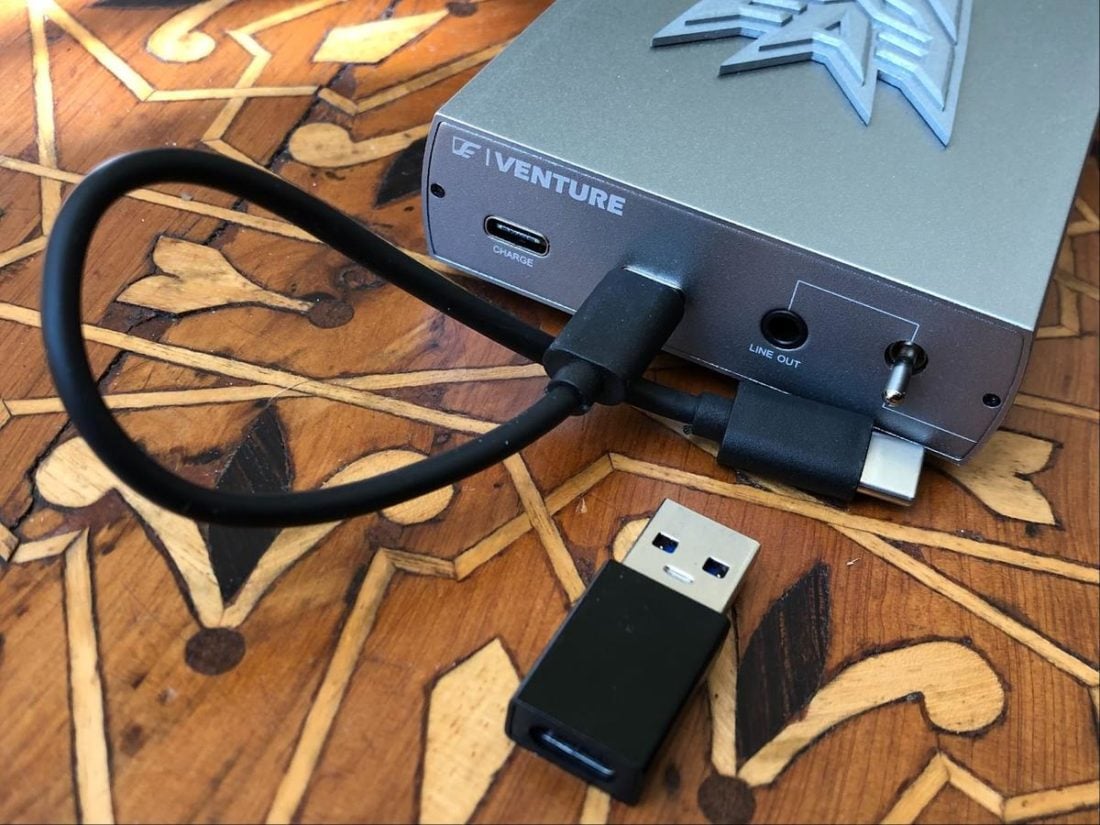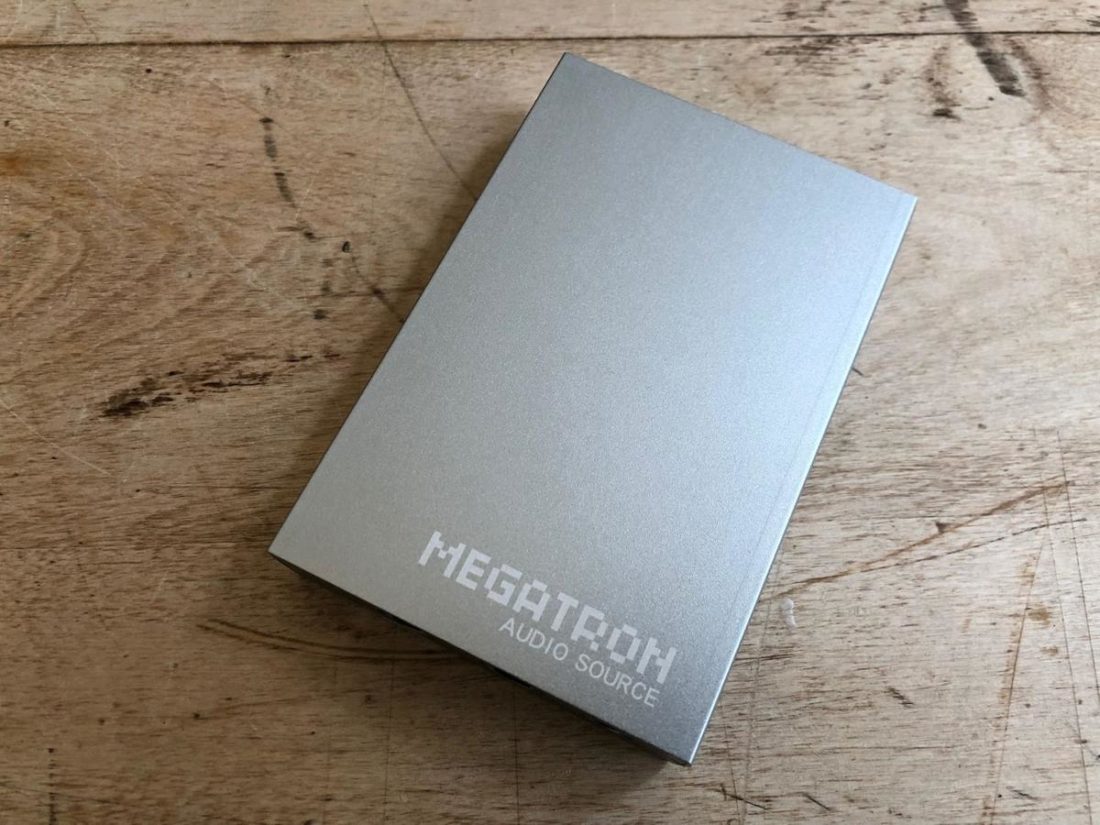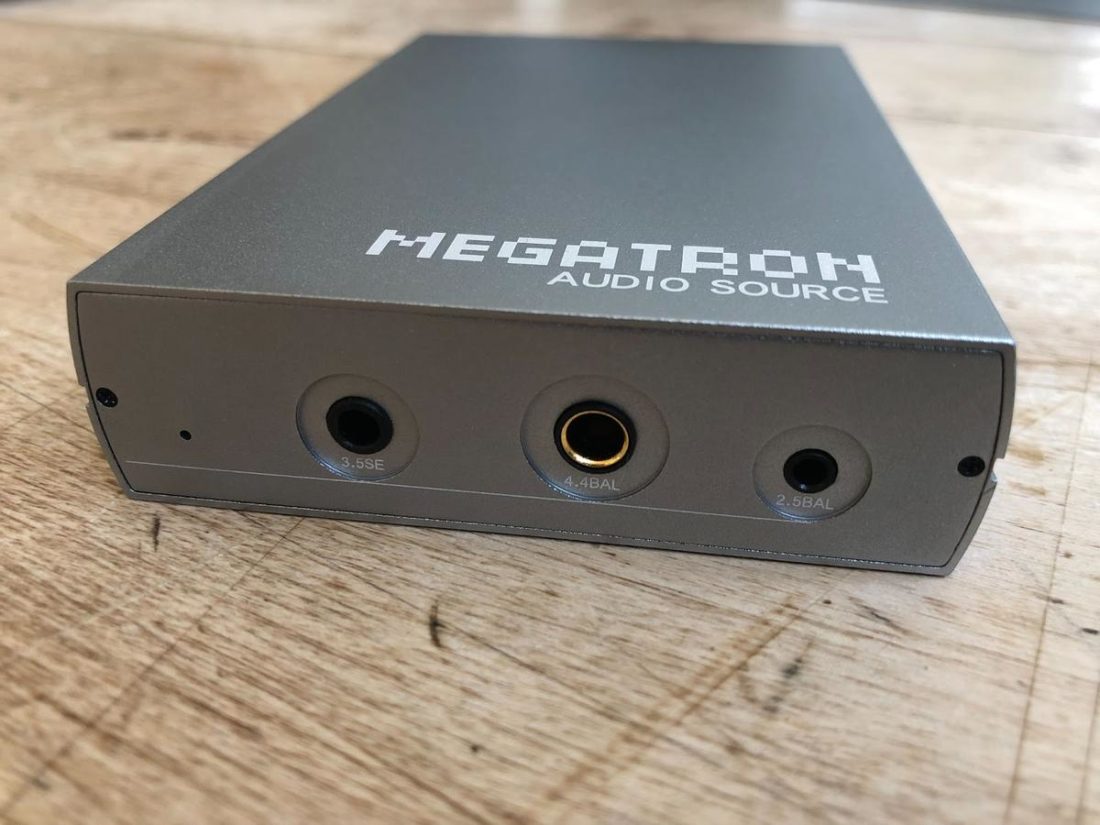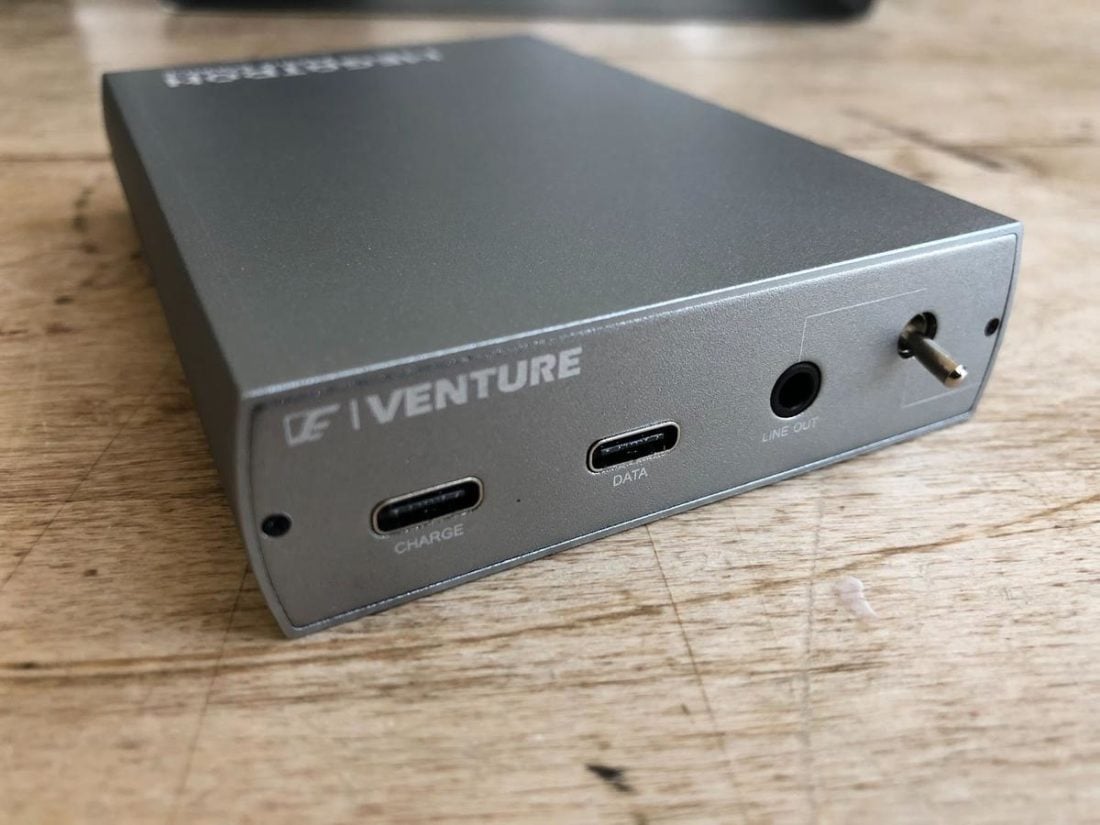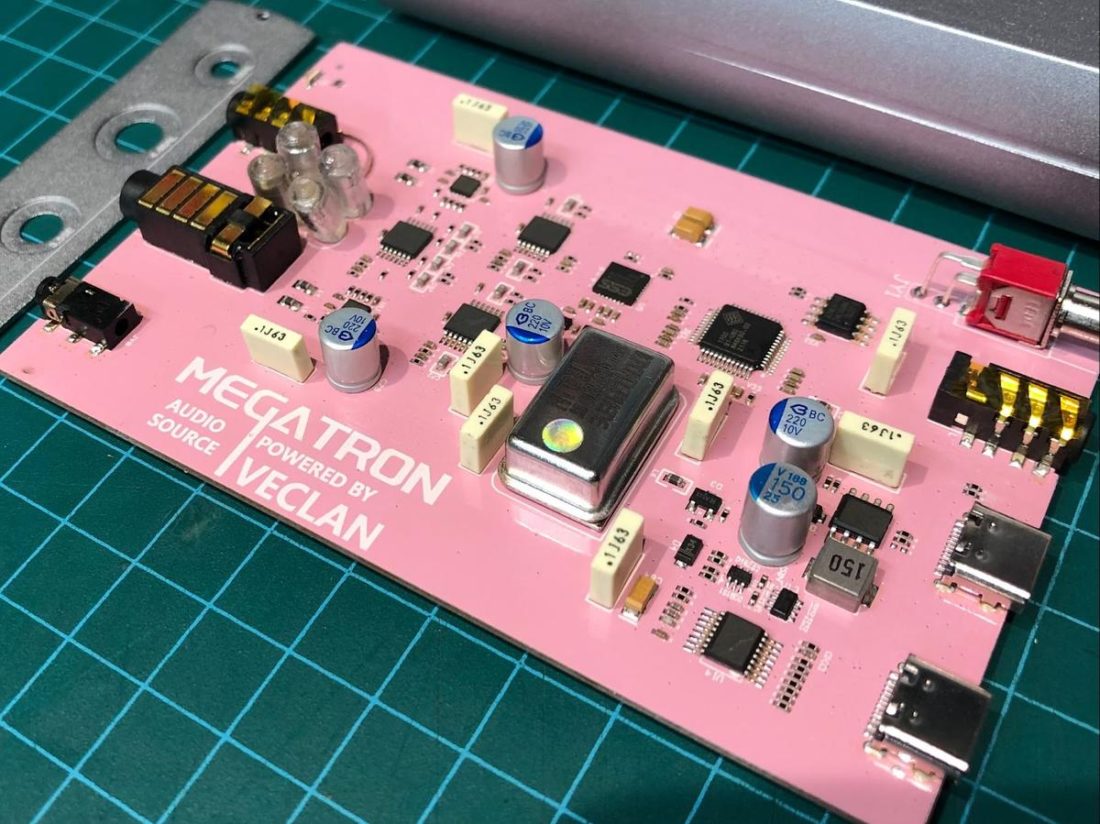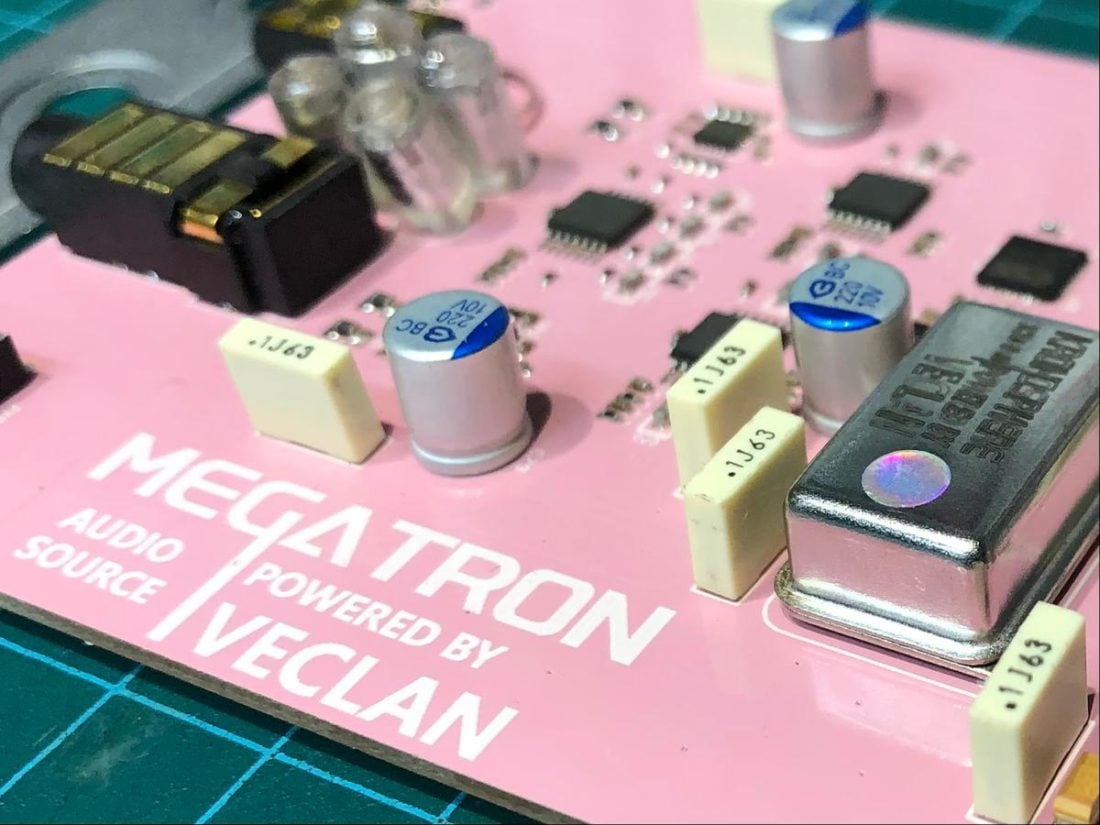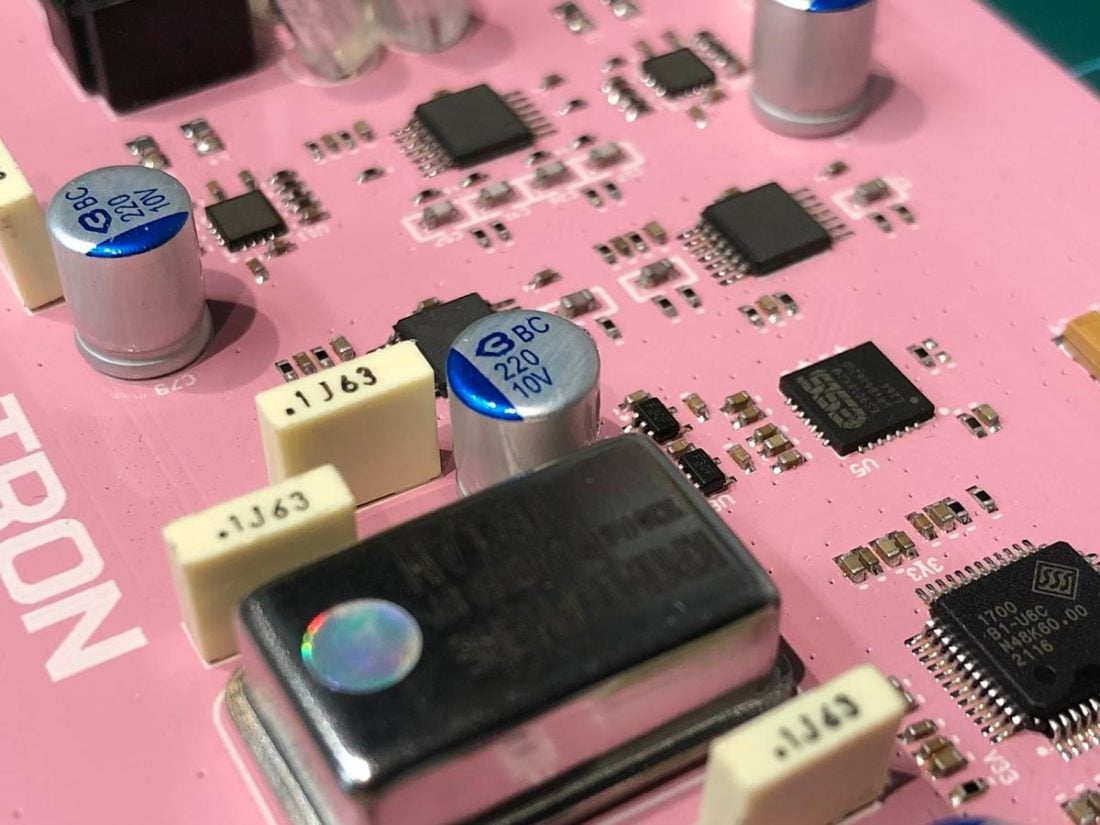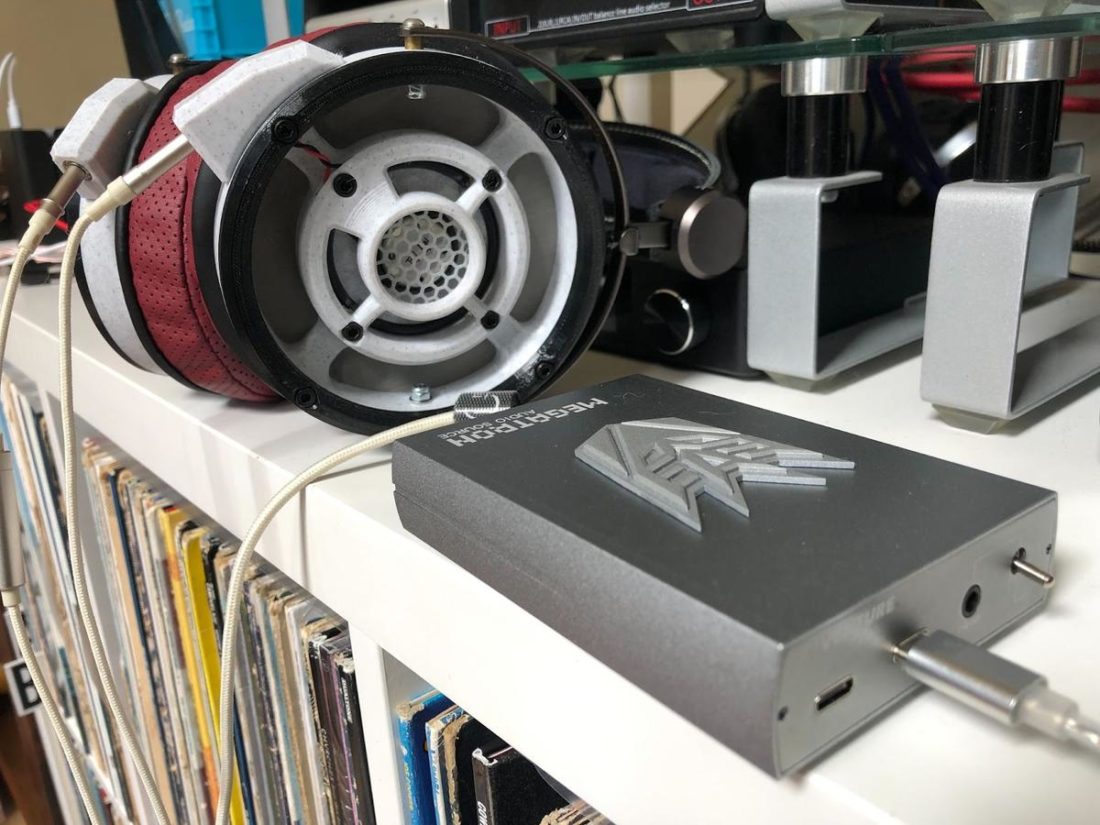The Megatron is a controversial device. It’s a tough one to categorize. At first glance, the Megatron appears to be the size and shape of a portable DAC/amp. But unlike portable DAC/amps, the Megatron is free from such things as a physical volume control, or really any other of the standard features typically found on that sort of device. Furthermore, there’s no battery inside its metal case. So, it’s a dongle? Essentially, yes. The Megatron is a ‘mega’ DAC/amp dongle with a few big caveats. Eschewing the typical strengths of dongles, such as small size, ease of portability, and broad compatibility with portable headphones and IEMs, the Megatron truly is a niche product. So, it’s time to transform our expectations of what it means to be a DAC/amp dongle. The Megatron is intended to power those few pairs of very inefficient IEMs and earbuds, high-impedance full-sized cans, and planar-magnetic monsters. And we haven’t even mentioned perhaps the most impressive thing about the Megatron. The price. Can a USD$50 device really conquer the world?
Company Overview
Venture Electronics (VE), located in Shenyang, China, rose to audio fame with the release of their Monk earbuds. Priced less than USD$10, the Monk are widely renowned for providing remarkably good sound and a sturdy build quality belying their low-price tag. VE is the brainchild of founder Wild Lee, and the brand is tied to this charismatic and ebullient character. Lee regularly interacts with members of his self-proclaimed clan on the ‘VEClan & Venture Electronics Official Club’ Facebook group. Lee’s untraditional approach offers his clan members insight into product development and sales processes and grants an unusual amount of unfiltered interaction with a company.
Technical Specifications
Form: Portable DAC, Amp DAC Chip: ESS Sabre ES9018K2 Audio Format Support: 24bit/96kHz PCM Amplifier: Custom amp module Power Output: Balanced: 300mW @32Ω 4.9 V, 40mW @300Ω, SE: 170mW @32Ω 2.4 V, 10mW @300Ω, AUX: 0.95V THD+N: Balanced: 0.021%, SE: 0.0095%, AUX: 0.01064% DNR: Balanced: 104.3dB, SE: 105.5dB Crosstalk: Balanced: 105.76dB @1kHz, SE: 60.64dB @1kHz, AUX: 99.01dB @1kHz Input: USB Type-C Output: Balanced: 4.4mm + 2.5mm, SE: 3.5mm, AUX line out: 3.5mm Weight (g): 156g Size: 76x22x110mm
Packaging
One of the ways that VE meets the low price point for the Megatron is to not spend extra on unnecessary niceties such as packaging. The Megatron arrives ensconced in bubble wrap and the cable and adapter are in a clear plastic bag.
In the box
Megatron USB-C to USB-C cable (±210mm) USB-C to USB-A adapter Monk Plus earbuds – Black Coffee Edition – 2.5mm (pre-order bonus at the time of purchase)
Cable
The included basic black plastic USB-C to USB-C cable is guaranteed to work with the Megatron, which can be picky regarding proper cable specifications. The metal-cased USB-A male to USB-C female adapter seems of high quality.
Design
The Megatron is cleanly housed in a silver metal sleeve that is about 7.5 cm wide, 2.5 cm high, and 11 cm long. At one end are the three headphone outputs (4.4mm and 2.5mm balanced, and 3.5mm SE) and the power LED. At the other end is a toggle switch to change between headphone output and the 3.5mm AUX line output. Also on this end are two USB-C ports for power pass-through (labeled CHARGE) and the data connection. While there is no internal battery, the inclusion of the CHARGE port allows the Megatron to pass-through power to the source device connected to the data port. This allows for basic 5V phone charging, up to a maximum of 20V/60W continuous charging for laptops. Please note that not all cables will fully support power passthrough and you may need to try several higher-quality cables to get it to work. The 3.5mm AUX line out is limited to 0.95V, and as such may feel slightly anemic if you are used to connecting 2V DAC sources to your amplifier. It is clean and functional, however, even if some increase of volume is required on the amp to compensate for the lower voltage.
Compatibility
No internal battery means that the source device must provide the 115mA required to power the Megatron. As there is no Lightning to USB-C cable included, iPhone users must purchase an adapter. With the DDHiFi TC28i adapter and a short Hidizs USB-C to USB-C cable from the S9 Pro, I have no issues with connecting to and powering the Megatron with my iPhone X. To be honest, the large size of the Megatron influenced my expectations of battery life consumption. It’s big and powerful. Surely, it must quickly eat up the battery of the source device? Surprisingly, this doesn’t seem to be the case. The Megatron appears to use a similar amount of power as other dongles like the Hidizs S9 Pro. Sure, there’s noticeable battery consumption after hours of usage on my iPhone, but this is to be expected when listening with any dongle. Computer and console users can use the included USB-C to USB-A adapter for desktop use. However, there are some reports that Android users may run into compatibility issues depending on the device and Android version.
Internals
The Megatron uses a single ESS Sabre ES9018K2 DAC chip and supports up to 24bit/96kHz PCM (but no MQA support). More impressive are the power output stats from the custom AB amplification module. While the 32 Ohm maximum figures are commonly touted (Balanced: 300mW @32Ω, 4.9 V; SE: 170mW @32Ω, 2.4 V) it is important to note that the outputs are significantly lower at the higher impedance loads that the Megatron is designed to power (Balanced: 40mW @300Ω, SE: 10mW @300Ω). Yet, when compared to the output power of a standard high-quality dongle such as the Hidizs S9 Pro (Balanced: [email protected]Ω, SE: [email protected]Ω SE), it is clear the Megatron is on a different level of amplification.
VE Megatron Sound
The Megatron is intended for high-impedance, lower sensitivity headphones and will create unwanted noise and hiss when paired with highly efficient headphones. I tried the Megatron with my iPhone and elderly MacBook Air. For headphones, I primarily used the HiFiMAN Ananda, although I also tried the Audeze LCD-2, LCD-5, Sendy Audio Apollo, and a pair of DIY 600Ohm 3D printed dynamic driver headphones. Pairing the Megatron with efficient IEMs is asking for trouble. Most IEMs are driven loudly at the very minimum volume level from the source device. A couple of notches above silent veers quickly into far too loud. I value my hearing too much to play with this equivalent of auditory nitro. So, if the Megatron mega-dongle isn’t for IEMs, what is it for? The planar-magnetic Ananda are a near-perfect match for the Megatron’s output characteristics. Rated at 25Ohms impedance and 103dB sensitivity, the Ananda aren’t especially hard to drive but show the typical planar-magnetic quirk of requiring a greater amount of power to sound their best. Properly paired, the Megatron does what any good DAC/amp should, that is, it becomes essentially transparent in the chain. It brings out the best characteristics of the headphones while presenting the music without noticeable manipulation. My impression is that the Megatron is more smooth than edgy, but it doesn’t sound blurred or smeared. There is plenty of power on hand to properly reproduce dynamic bass hits. It’s difficult to pick out any specific elements that jump out, and in my book, that’s a good thing. There’s no distortion or harshness, and the music is presented effortlessly and naturally. Paired with any of the planar-magnetic headphones in my collection, the Megatron sounds more like a desktop device rather than a portable device, especially a dongle. I could genuinely be satisfied with just the Megatron providing DAC and amplifier duties with this sort of headphone. And that’s pretty remarkable. Let’s not forget that this is a USD$50 device. Pair the HiFiMAN Edition XS with the Megatron and you could be done with your audiophile journey at a remarkably affordable price tier.
Where to Buy
Official Store
Conclusion
The Megatron is a disrupter. It’s an innovative outlier. It genuinely cares not for your expectations of what a dongle should be. Megatron is the cruel and tyrannical leader of the Decepticons, a faction of sentient, war-mongering robotic lifeforms that seek to conquer the known universe. Err, no. Sorry, wrong Megatron. In the end, this less villainous Megatron came as a very pleasant surprise. Curiosity led me to sign up for the Megatron pre-launch based on Wild Lee’s seemingly outlandish claims. A $50 device built to compete and humble far more expensive DAC/amps. A giant dongle that can power hard-to-drive headphones, that is not compact, feature-rich, or suitable for most portable headphones or IEMs. To VE’s credit, they clearly set buyer expectations. The fault entirely lies with the purchaser if mistakenly buying the Megatron as a generalist device. If you want the benefits of a standard dongle DAC/amp, don’t buy the Megatron. But if you follow Lee’s rules and want a terrific and surprisingly affordable niche device to power planar-magnetic cans, the Megatron has few peers. It sounds tremendous, has tons of power, has a remarkably minimal drain on the source battery, and offers an innovative power pass-through. All that for a shockingly low price tag. Dang. Well done VE!



